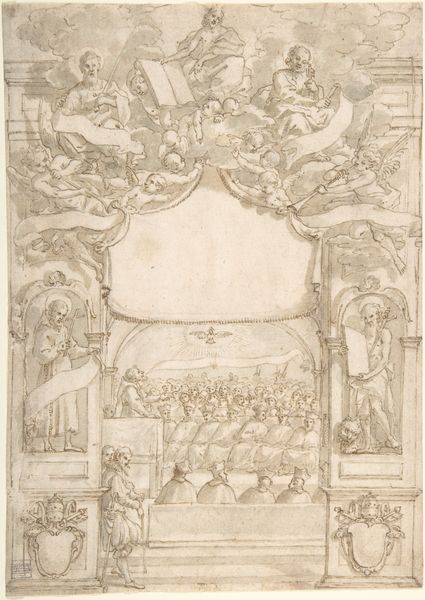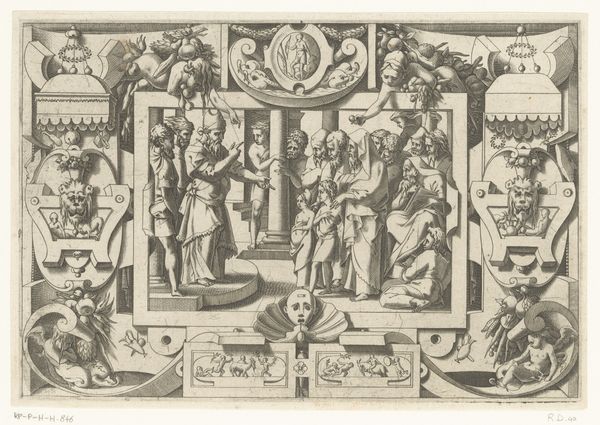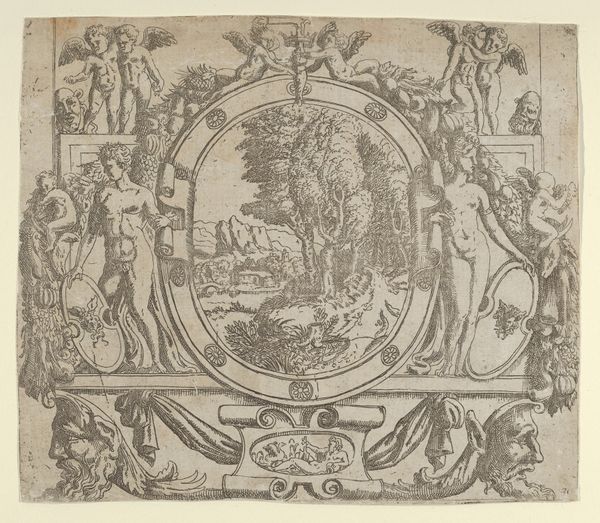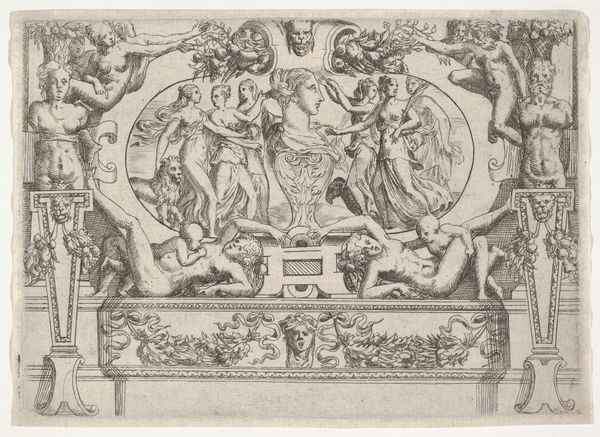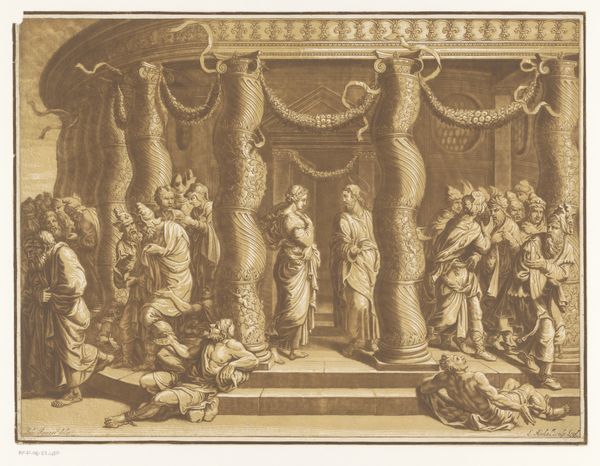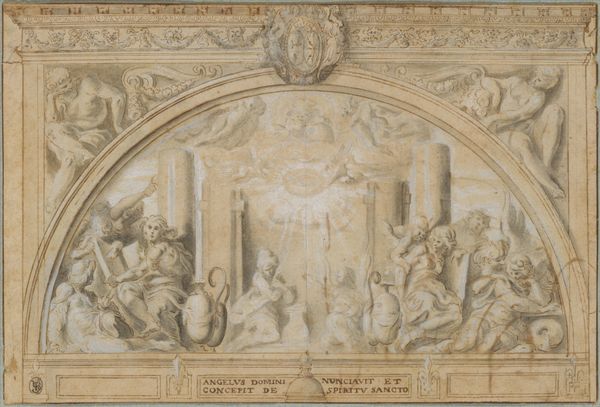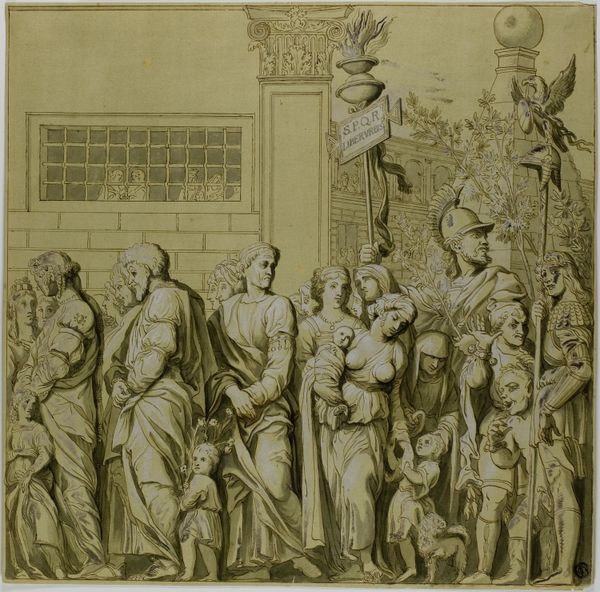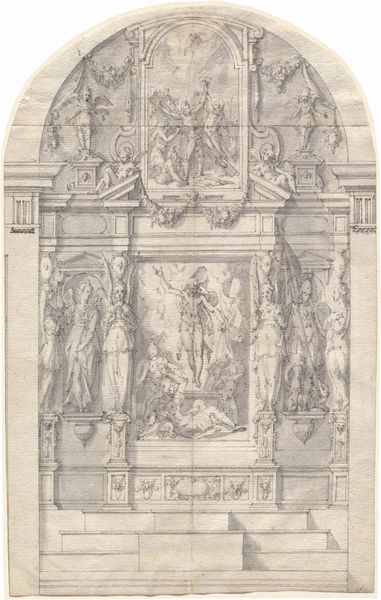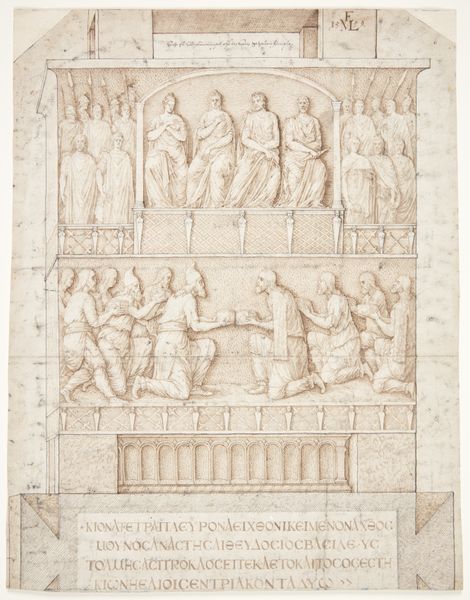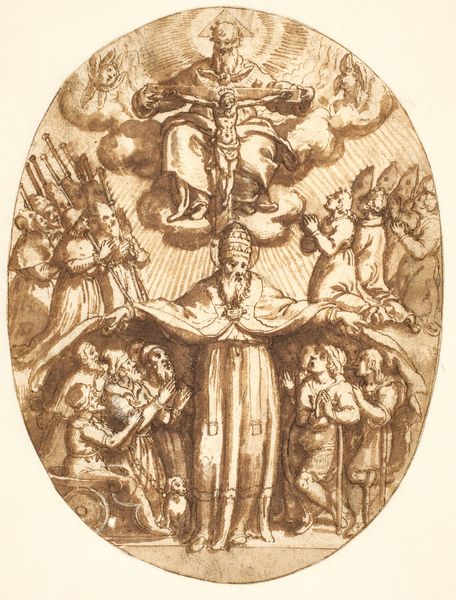
drawing, print, etching, ink
#
portrait
#
drawing
#
baroque
#
ink painting
# print
#
etching
#
etching
#
figuration
#
ink
Dimensions: sheet: 4 15/16 x 7 1/2 in. (12.5 x 19 cm)
Copyright: Public Domain
Curator: Okay, this is "Study for a Frontispiece," a pen and brown ink drawing made in 1621 by Willem Pietersz. Buytewech. You can find it here at the Met. Editor: It's...oddly celebratory and brutal at the same time, isn’t it? All that lush detail framing… nothingness, practically. And is that a garland of dead game birds on the left? Curator: It is. On either side stand these rather solid figures: one with what looks like baking tools and another holding a spear. I see it as this carefully constructed picture that promises something. Frontispieces, after all, are the gateway to something bigger. Editor: So, symbolically, what’s behind the empty gate? An early kind of clickbait? This visual vocabulary--bounty, strength, domesticity--all circling a void. It’s interesting, how potent absence can be. The blank cartouche promises the story to come… but what story? A bit ominous. Curator: Perhaps that's part of the appeal, that openness to interpretation. The artist provides the stage and props, but we, the viewers, must complete the narrative. The cornucopia of imagery also links the themes of earth and family. Editor: There's an implied invitation here to look closer. What appears decorative or simply ornamental tells you more. What is concealed is very much a statement, like cultural memory itself--it can either fade away or you can keep digging at it to expose its inner meanings. Curator: Agreed. Think of the bull's head at the very top, garlanded with foliage. A really powerful symbol with so many potential links to offer; religion, power, masculinity… Editor: Yes, a symbol that embodies potency and strength. All those dead animals; fish at the bottom... that feels purposeful and precise, not merely decorative. This frontispiece hints at a world where even the most joyous occasion carries with it echoes of mortality and life cycles. Curator: So, Buytewech offers us not just a visual appetizer, but also a complex meditation on meaning, expectation, and cultural symbols. It asks us, almost challenges us, to fill in those blanks with intention. Editor: Definitely. There's much more than initially meets the eye in this 'empty' frontispiece. That negative space is, in a strange way, what makes it so rich with possibility.
Comments
No comments
Be the first to comment and join the conversation on the ultimate creative platform.
